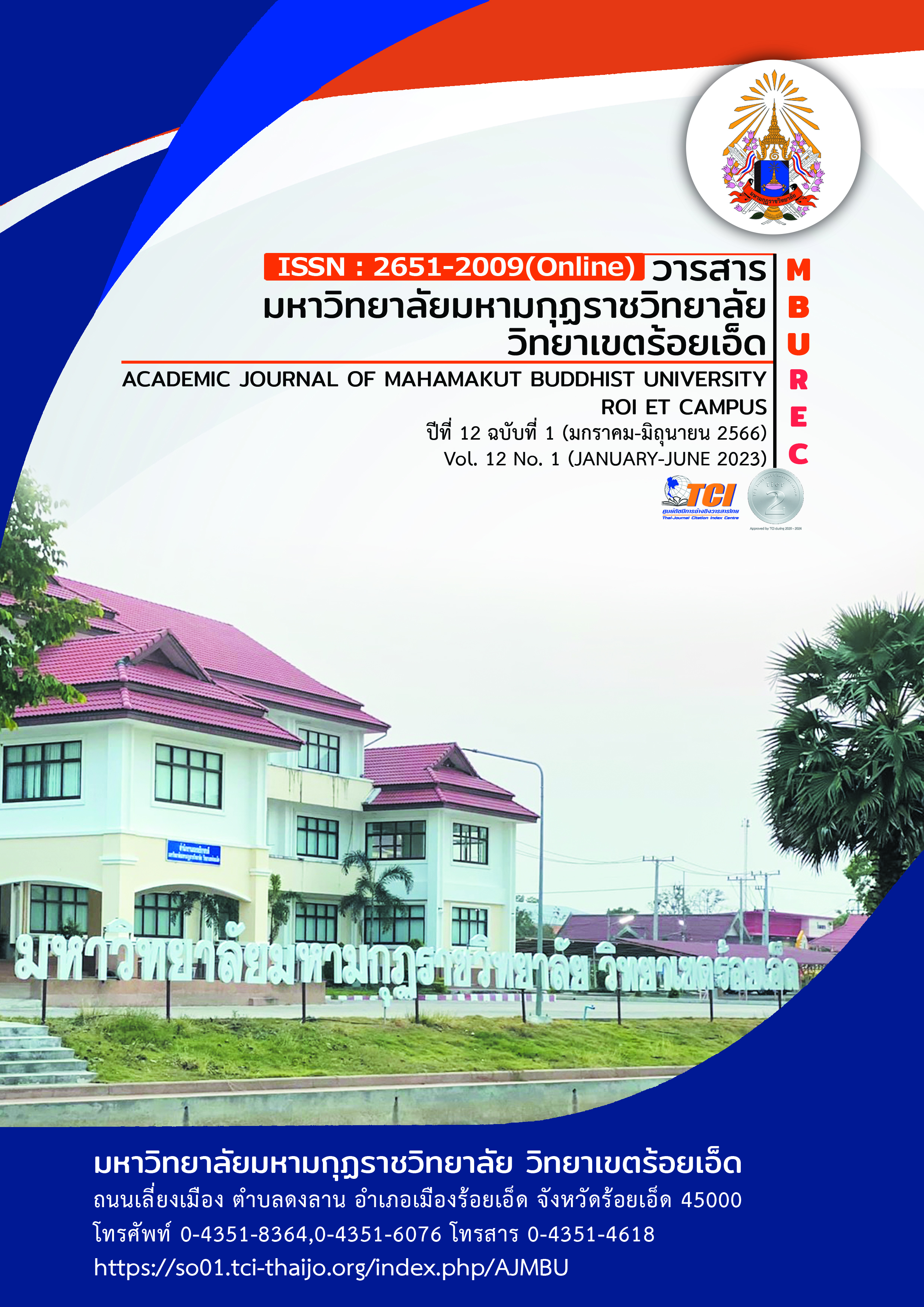THE CONSTRUCTION OF DIGITAL CITIZENSHIP: DIGITAL ETIQUETTE SITUATION SCALE FOR LOWER SECONDARY SCHOOL STUDENTS
Main Article Content
Abstract
The purpose of this research wasto construct and validate thequality of a digital citizenship: digital etiquette scale for lower secondary school students.The samples were selected by using multi-stage sampling which included 600lower secondary school students from Secondary EducationalService Area Office One. The instrument used for the research was the digital citizenship: digital etiquette situation scale for lower secondary school students. The data analysis for the discrimination, the reliability and the confirmatory factor analysis.
The results of the research were as followsthedigital citizenship: digital etiquette scale for lower secondary school students consists of 24itemshad three factors and six indicators. The Index of Item-Objective Congruence (IOC) varied from 0.60 to 1.00.The item discriminationsvaried from 0.258 to 0.590 and the Cronbach’s alpha coefficient was 0.875. The digital citizenship: digital etiquette scale correlated with the empirical data and a construct validity from confirmatory factor analysis by considering the following: Chi-square=230.745, df=200, p-value=0.067, χ2/df=1.154, GFI=0.972, AGFI=0.959, RMSEA=0.016.
Article Details

This work is licensed under a Creative Commons Attribution-NonCommercial-NoDerivatives 4.0 International License.
References
กระทรวงเทคโนโลยีสารสนเทศและการสื่อสาร. (2559). แผนพัฒนาดิจิทัลเพื่อเศรษฐกิจและสังคม. กรุงเทพมหานคร : กระทรวงเทคโนโลยีสารสนเทศและการสื่อสาร.
กระทรวงศึกษาธิการ. (2551). หลักสูตรแกนกลางการศึกษา พุทธศักราช 2551. กรุงเทพมหานคร : โรงพิมพ์ชุมนุมสหกรณ์การเกษตรแห่งประเทศไทย จำกัด.
ชลาธิป ชาญชัยฤกษ์. (2556). Digital Native vs Digital Immigrant. สืบค้นเมื่อ 19 ตุลาคม 2563. จาก http://www.culi.chula.ac.th/salc/images/ENG%20Today%20PDF/Eng.-15%20(Digital%20Native%20vs%20Digital%20Immigrant).pdf
นิตยา วงศ์ใหญ่. (2560). แนวทางการพัฒนาทักษะการรู้ดิจิทัลของดิจิทัลเนทีฟ. Veridian E-Journal, Silpakorn University. 10(2). 1630-1642.
ล้วน สายยศ, และ อังคณา สายยศ. (2543). การวัดด้านจิตพิสัย. กรุงเทพมหานคร : สุวีริยาสาส์น.
ศิริชัย กาญจนวาสี. (2556). ทฤษฎีการทดสอบแบบดั้งเดิม. พิมพ์ครั้งที่ 7. กรุงเทพมหานคร : โรงพิมพ์แห่งจุฬาลงกรณ์มหาวิทยาลัย.
สุภมาส อังศุโชติ, สมถวิล วิจิตรวรรณา, และรัชนีกูล ภิญโญภานุวัฒน์. (2554). สถิติวิเคราะห์สำหรับการวิจัยทางสังคมศาสตร์และพฤติกรรมศาสตร์:เทคนิคการใช้โปรแกรม LISREL. กรุงเทพมหานคร : เจริญดีมั่นคงการพิมพ์.
Ribble, M. (2011). Digital citizenship in schools: Nine elements all students should know. Virginia : International Society for Technology in Education.
Schinkten, O. (2019). Digital Citizenship. Retrieved 5 October 2020. From https://www. lynda.com/Classroom-Management-tutorials/Digital-Citizenship/4409562.html


